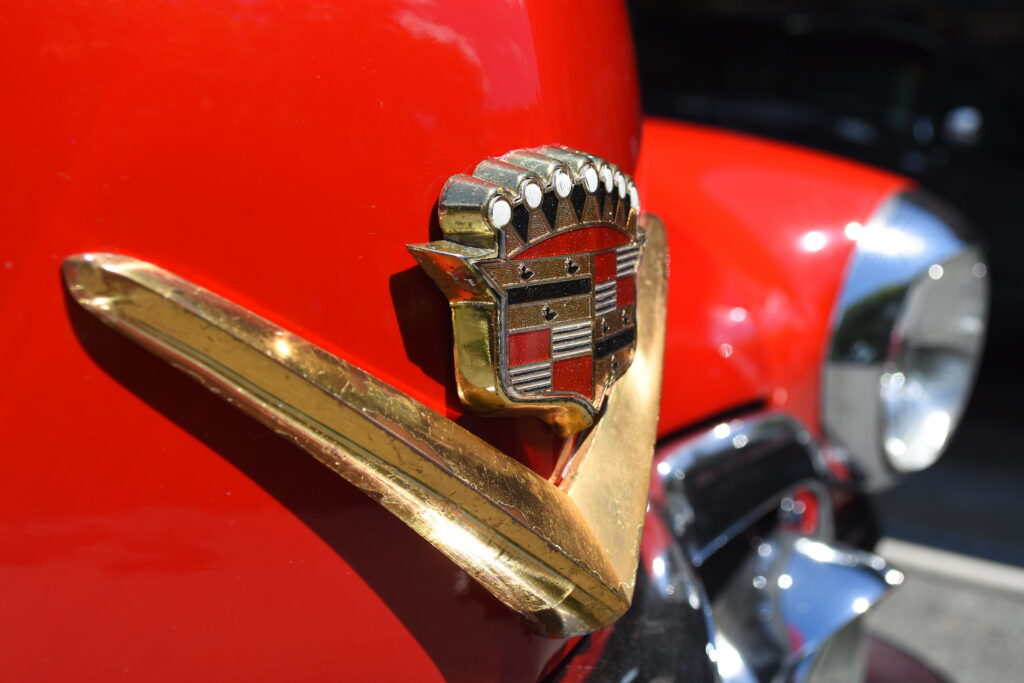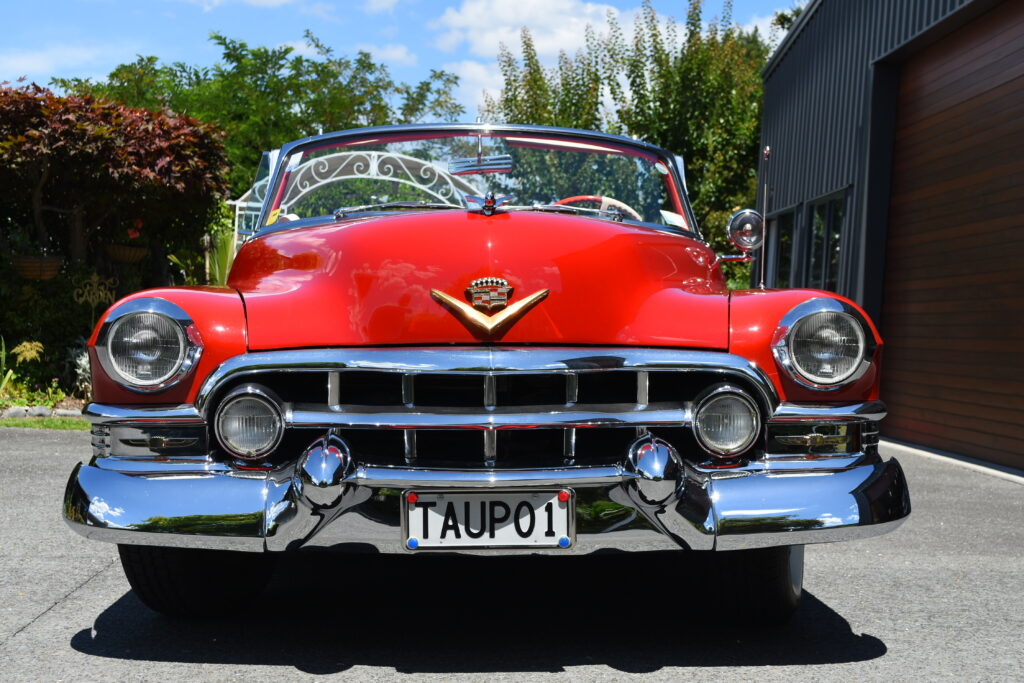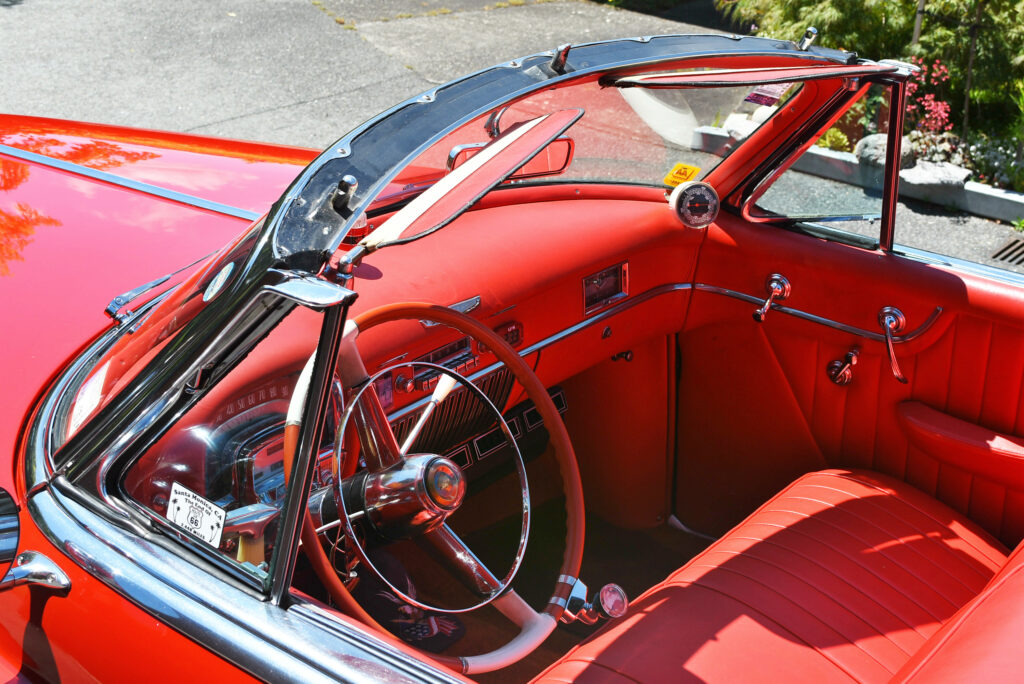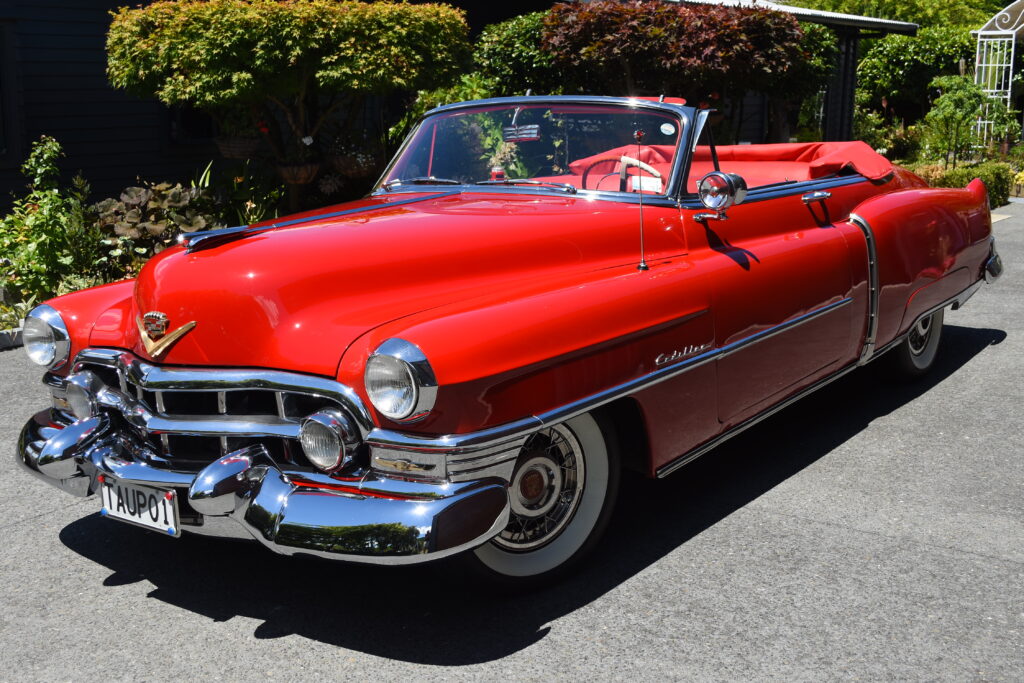One of the oldest car brands in the world, the Cadillac is synonymous with many a claim to fame — some not as well known as others
By Matt Mortimer

Whether it’s the art installation Cadillac Ranch in Amarillo, Texas, where 10 Caddys are buried nose first in the ground to showcase the evolution of finned rear ends, or recognising famous owners from yesteryear, these cars hold a special place in US folklore. Famous owners include Elvis Presley, Al Capone, Marilyn Monroe, and US President Franklin D Roosevelt.
For Taupo-based Cadillac enthusiast Kevin Cotton, his 1952 Cadillac Series 62 was a journey in itself. Kevin’s father Lloyd was the one who planted the seed of Cadillac ownership, having a ’52 himself when Kevin was a boy. A flick through an old photo album confirmed the Cadillac brand was number one in the Cotton household, and it has continued to be for Kevin.
“Dad had a ’52, which I always admired, so I set out to find one for myself; and eventually one came up — in Florida. A deal was done sight unseen and a plan was hatched to travel to the US to pick it up,” says Kevin.
The journey
A journey to Miami followed, with a serious road trip in store — down the iconic 2448-mile stretch that many have journeyed on: Route 66.
“We made sure we did the length of it — anywhere we left the road, we made sure we returned to it in the same spot — to make sure we covered the whole area before shipping the car home. It had fuel blockages when we picked it up. Not knowing where the blockages were, we put three fuel filters in the fuel line to try and work out where they were. We’d drive for a while and then check the centre one as we went. We even had one guy pull over seeing us examining the filters. He walked back to his car, pulled some fuel line out of his car, and gave it to us, just in case you could use it,” says Kevin.
Strangely enough, the car didn’t need much along the way, other than four new tyres. Spares and memorabilia were thrown in the boot for the journey. The ’52 made it home with some good old-fashioned Kiwi ingenuity and with the help of a few locals along the way — pieces of extra fuel line and much more were added to get it home to New Zealand.

Third generation
The 1952 variant of the Series 62 is the third generation of its kind, the brainchild of Cadillac designer Harley Earl. This particular model is Kevin’s favourite, with a few quirky features that set it apart from others.The Series 62 was a series of models produced by Cadillac from 1940 to 1964. It was to become known as the Cadillac Series 6200 in 1959, and stayed with that moniker until another name change marked the introduction of the Cadillac Calais six years later in 1965.
Encased in the curved windscreen is a compass and an altimeter — it was quite possibly one of the earliest vehicles to house these features. Fuel is poured into the 76-litre (20.1 gallon) fuel tank via a fuel cap located in the rear fin to eventually make its way to the cast-iron V8 power plant, known as one of the 331-series engines built by Cadillac. This would be expected to come across with the usual V8 rumble, but this car epitomises the ‘wolf in sheep’s clothing’ mantra, with a smooth exhaust note, ticking with a retro quality, somewhat akin to a well-worn wristwatch.
The engine had an advertised power rating of 139kW (190bhp), handling 437Nm of torque; quite the power plant to push the 2080-kilogram frame (4590lbs) towards its suggested top speed of just breaking the ton at 103 miles per hour (166kph).
Bolted to the back of The General’s block is the other half of the drivetrain — the four-speed Hydramatic automatic gearbox. This brings the power to the ground via the obligatory 15-inch wheels clad in whitewall tyres, which span the 126-inch wheel span.

Personality plus
The red-on-red colour scheme may seem overpowering to some. The chrome grille and bumpers, however — which were common in cars of this era and ilk — set the abundance of colour off well. All this is overseen by the famous Cadillac crown emblem, which holds centre stage on the bonnet. Those familiar with the brand will notice the gold colour of the emblems and ‘V’ both front and rear, as opposed to the usual silver. This is to commemorate the 50-year celebration of the Cadillac brand in 1952, and is no surprise from a company that revised and redesigned this emblem more than 30 times to get what you see on the latest models. The trainspotters about the place will know 1952 is the year Queen Elizabeth took the throne — quite fitting for UK Cadillac drivers from two totally unrelated milestones! Style changes didn’t stop with gold-emblazoned castings; redesigned grille panels included chrome trim below each headlight.
New features were added as standard, including a self-winding clock, stannate-treated pistons, and a four-barrel carburettor by way of a Rochester Quadrajet.The aforementioned chrome bumper frames a particular unique feature, by way of the exhaust, too. This is one of the few Cadillacs with the exhaust exiting through the rear bumper. Boasting twin pipes, the feature brings some balance not seen or even thought of in modern-day vehicles.
All in all, the car radiates personality and the kind of vibe a convertible attracts — for those who have enough hair to whip around in a spin around the block, of course.
Rivals in 1952 weren’t in short supply, with General Motors itself producing the Buick Roadmaster Convertible and the Chevrolet Bel Air. These were competing for market share with a formidable line-up, which included other such gems as the Macauley Coupe, DeSoto Firedome, Studebaker Commander, Plymouth Explorer, and the infamous Hudson Hornet to name but a few.

The shed
With all this talk of competition that spans continents — there were a few European cars attracting attention as well — you might think the allure of other marques might have piqued Kevin’s interest. However, you would be wrong.
Kevin’s shed is home not just to this Cadillac but to others, too. From the ’52 to a modern-day offering, four separate decades are represented. This collection would not be complete without memorabilia cladding the walls that house it — some from the aforementioned road trip and the rest from various collecting and hunting expeditions. The ’52 has its boot adorned with paraphernalia to finish off the look — items from the ’50s or relating to the epic road trip that brought her home down Route 66.
While there are no pink Cadillacs in play — I’m not sure if that is an option moving forward — nor is there any other brand in sight.

1952 CADILLAC 62 SERIES CONVERTIBLE
Engine: 5424cc, 90-degree V8
Bore/stroke: 97/92mm
Valves: 16 OHV 2-valves per cylinder
Compression ratio: 7.5:1
Max power: 139kW (190bhp) @ 4000rpm
Max torque: 437Nm @ 2400rpm
Fuel system: Rochester Quadrajet carburettor
Transmission: Hydramatic 4-speed auto
Suspension F/R: Independent coil springs / longitudinal leaf spring
Steering: Ball bearing, worm and nut
Brakes: F/R: Drum
Dimensions
Length: 5601mm
Wheelbase: 3200mm
Width: 2035mm
Tack F/R: 1499/1600mm
Height: 1592mm
Weight: 2005kg
Performance
0–100kph: 14.3 seconds
Top speed: 103mph (166kph)


